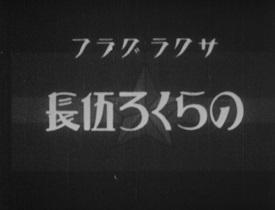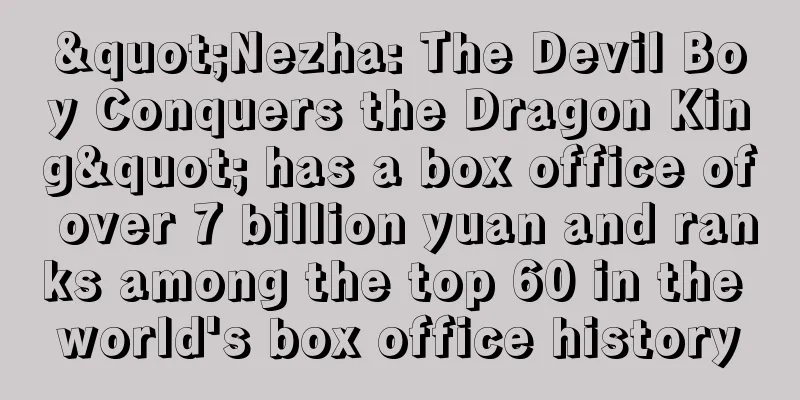Corporal Norakuro: Reevaluating classic anime from the good old days

"Goncho Norakuro": A masterpiece of pre-war Japanese animation"Goncho Norakuro" is a Japanese animated film released in 1934, based on the popular manga "Norakuro" by Suiho Tagawa. This film holds an important place in the history of prewar Japanese animation, and its unique story and characters were loved by many people. Below, we will introduce detailed information and reviews of this film, as well as recommended points. Overview
story■ Story The barracks of the Fierce Dog Regiment. Today is a holiday and Corporal Norakuro has a lot of free time to kill, but he gets a craving for yakitori and goes to a nearby food stall. After being flattered by the owner of the yakitori restaurant, Norakuro tells a tale of his heroic victory in a bayonet match against the Yamazaru Regiment. He is so engrossed in the story that he finishes off five servings of yakitori, and when he arrives at the park with a box of yakitori as a gift for the regimental commander, he suddenly becomes sleepy. He takes a nap in a nearby wastebasket. In his dream, he discovers that two soldiers from the Yamazaru Regiment have stolen confidential documents from the Fierce Dog Regiment. He gives chase, but the two Yamazaru escape in a balloon. Norakuro takes fireworks from a fireworks factory and launches them at the balloon, but misses it. As a last resort, he gets inside the fireworks tube himself and jumps into the balloon, safely retrieves the documents, and lands by parachute. When I woke up, I was holding the documents I had taken back and a box of yakitori in my arms. I looked at the clock and saw that there were five minutes left until curfew. I ran as fast as I could to the barracks. Main Staff■ Main staff・Adaptation: Chuzo Aoji ・Illustration: Yasuji Murata Background and historical significance of the work"Gocho Norakuro" is one of the most noteworthy pre-war Japanese animation films. At the time of its release in 1934, Japan's animation industry was still in its infancy, and many challenges were being faced in terms of both technique and expressiveness. This work was one example of a success that was produced in that environment, and it had a major impact on the subsequent development of Japanese animation. The original work, Norakuro by Tagawa Suiho, is a popular manga that began serialization in 1931 and was widely read in Japan before the war. The protagonist, Norakuro, is a humorous character who portrays military life, and his unique charm has been carried over to the film version. Director Murata Yasuji was a leading figure in the Japanese animation world at the time, and his skills and sensibilities played an important role in completing this work. The appeal of the storyThe story of Corporal Norakuro begins with Norakuro going to eat yakitori on his day off. The scene where he is flattered at the yakitori restaurant and tells tales of his heroism well represents Norakuro's humorous personality. Later, while taking a nap in the park, Norakuro dreams and goes on an adventure to retrieve secret documents from soldiers of the Yamazaru Regiment. This dream sequence is an interesting mix of reality and fantasy, and has the power to draw the viewer in. Particularly memorable is the scene where Norakuro chases the balloon with fireworks, a scene that makes a strong visual impact thanks to the dynamic visual expression that made full use of the technology of the time, and the scene where he wakes up from a dream to find himself holding a box of yakitori, a clever ending that combines humor and irony. Character AppealThe main character, Norakuro, is a humorous portrayal of military life, and his unique charm is a major part of the appeal of this work. Norakuro's humorous personality and actions provide laughs for the audience, while at the same time symbolizing the harshness and absurdity of military life in prewar Japanese society. Norakuro's adventurous spirit and courage are also elements that move the audience. The other characters are also unique, such as the owner of a yakitori restaurant and the soldiers of the Yamazaru Regiment, who play important roles in adding excitement to Norakuro's adventures. The portrayal of these characters reflects the social situation and people's lives of the time, adding depth to the work as a whole. Technical evaluation"Goncho Norakuro" deserves very high praise, considering the state of the art in 1934. In particular, the fireworks and balloon chase scenes are dynamic visuals that make full use of the technology available at the time. These scenes not only have a strong visual impact, but also play an important role in the progression of the story. The quality of the drawings is also high, with the characters' expressions and movements depicted in detail. Director Yasuji Murata's technique and sensibility played an important role in raising the quality of this work. Norakuro's humorous expressions and movements in particular leave a strong impression on viewers. Social impact"Goncho Norakuro" played an important role in raising the status of animation films in prewar Japanese society. The work humorously depicted military life and the lives of ordinary people in Japanese society at the time, providing laughter and emotion to viewers. This work also had a major impact on the later development of Japanese animation, inspiring many creators. In particular, the character of Norakuro symbolized the harshness and absurdity of military life in prewar Japanese society, and deeply moved viewers. The appeal of this character became a reference for character creation in later Japanese animation, and influenced many works. Recommended points"Goncho Norakuro" is an essential work for understanding the history of prewar Japanese animation, and its unique story and characters have been loved by many people. In particular, Norakuro's humorous personality and actions provide laughs to viewers, while also symbolizing the harshness and absurdity of military life in prewar Japanese society. In addition, the dynamic visual expression, which made full use of the technology of the time, not only creates a visual impact, but also plays an important role in the progression of the story. This work is recommended for those who want to know about the history of prewar Japanese animation and those who want to enjoy humorous stories and characters. It is also an important reference for those who are interested in the later development of Japanese animation. Please watch this work and feel the charm of prewar Japanese animation. Related works and recommendationsIf you enjoyed "Gocho Norakuro," we also recommend the following related works. These works allow you to enjoy the history of prewar Japanese animation as well as humorous stories and characters.
By watching these works, you can gain a deeper understanding of the history of prewar Japanese animation, as well as the appeal of humorous stories and characters. We hope you enjoy these works as well. summary"Goncho Norakuro" occupies an important place in the history of prewar Japanese animation, and its unique story and characters have earned it a great deal of love. Through Norakuro's humorous personality and actions, the work symbolizes the harshness and absurdity of military life in prewar Japanese society. Furthermore, the dynamic visual expression, which made full use of the technology of the time, not only creates a visual impact but also plays an important role in the progression of the story. This work is recommended for those who want to know about the history of prewar Japanese animation and those who want to enjoy humorous stories and characters. It is also an important reference for those who are interested in the later development of Japanese animation. Please watch this work and feel the charm of prewar Japanese animation. |
<<: A thorough look at the appeal and reviews of the 1936 picture book
>>: Review of the manga "Monkey's Big Catch": A perfect balance of monkey adventure and humor
Recommend
Shenmue The Animation review and impressions: Will it exceed expectations?
Shenmue Animation: An epic adventure reimagining ...
Behind-the-scenes photos of "Watchmen" revealed that "Black Manta" plays Dr. Manhattan
Behind-the-scenes photos of "Dr. Manhattan&q...
Albert Pine, director of 1990's Captain America, dies at 69
Albert Pine, the sci-fi film director who directe...
Lady Gaga happily kisses director at London premiere of A Star Is Born
Today, the movie "A Star Is Born" held ...
Johnson-starred "Jungle Cruise" became the North American box office champion with 91.8 million dollars in the first week
According to IGN, the rough report of North Ameri...
Chen Kun's film "Onmyoji" is finished and will be released in 2020
The movie "Onmyoji", adapted from the p...
"Tomorrow's Song" Reevaluating the moving song of everyone
Tomorrow's Song - Melody for the Future "...
Joker Game review: A great anime about the spy world
"Joker Game": A detailed tale of a spy ...
The three parts of "EVA New Theatrical Edition" are now available on YouTube for free! Relive the classic memories
On the evening of April 20, the classic masterpie...
Astro Boy Traffic Safety Education: Its Effects and Significance from an Anime Perspective
Astro Boy's Road Safety - Balancing Safety an...
A new animation of "The Prince of Tennis" will be produced to commemorate the 20th anniversary of the broadcast
2021 will mark the 20th anniversary of the popula...
Gegege no Kitaro: Yokai Express! The Phantom Train - A reappraisal of a 90s masterpiece
"GeGeGe no Kitaro: Yokai Express! Phantom Tr...
Netflix brings together three action movie directors to remake the action movie "The Raid"
Three action film directors Gareth Evans, Michael...
"Fengshen" has a hard time making back its 3 billion investment: box office exceeded 200 million in 3 days
The official Weibo account of the movie "Fen...
Star Wars fans share their photos of Baby Yoda as snowman
According to foreign media CNET, many parts of No...









